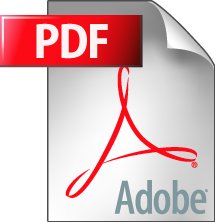 |
Ruchi Gupta, Postdoctoral Fellow
Laboratory of Molecular Biology and Biochemistry
Rockefeller Research Building 510
The Rockefeller University, Box 187
1230 York Avenue
New York, NY 10065
Telephone: 212-327-8284
Fax: 212-327-7904
rgupta@rockefeller.edu
 Curriculum Vitae Curriculum Vitae
|
|
Education:
Postdoctoral Researcher, Rockefeller University, August 2008 - present
Ph.D. in Chemistry, Stony Brook University, 2003-2008
M.S. in Chemistry, Indian Institute of Technology, Kanpur, India, 2001-2003
B.S. in Chemistry, St. Stephens College, Delhi University, 1998-2001
|
|
Research:
Inhibition of Amyloidogenesis by NUCB1 in Alzheimer’s disease and Type 2 diabetes
The transition of an unfolded/misfolded peptide into an extensive b-pleated sheet structure is termed as amyloidogenesis. The deposition of these insoluble b-sheet aggregates into organs/tissues results in Amyloidosis. Amyloidosis has been associated with a myriad of diseases including neurodegenerative diseases like Alzheimer’s disease, Parkinson’s disease, Huntington’s disease, Transmissible spongiform encephalopathy or mad cow disease and also with Type 2 diabetes. The peptide/protein undergoing amyloidogenesis in each of these diseases shares no sequence or structure in common. However, the amyloidogenic pathway seems to be similar. In our laboratory, we have established the anti-amyloidogenic properties of NUCB1 towards Ab and Amylin. What still needs to be unraveled is the mechanism of this activity of NUCB1 and its physiological relevance. Further, we will test the relevance of the observed anti-amyloidogenic property of NUCB1 in other amyloidogenic diseases as well.
The role of NUCB1 in regulating the G-protein activation
NUCB1 is a major Golgi-resident protein with DNA binding, Ca2+ binding and leucine zipper domains. It is present in all cytosolic, peripheral membrane bound and secreted cellular fractions. As a part of its diverse interactome, it interacts with the C-terminal a5 helical domain of Gai1. This interaction with NUCB1 has been shown to regulate the dynamic distribution of Gai1. In our undertaking, we primarily aim to understand the role of this interaction in G-protein activation and to understand in detail the mechanism and the relevance of this interaction in physiology.
^
|
|
Awards:
Chemistry Award for Excellence in Doctoral Research (2008)
Chemistry Award for Outstanding Service and Graduate Chemical Society foundation (2008)
Campus Service Award, Graduate Student Organization (2007)
Campus Life Award, Stony Brook (2006)
Campus Life Service Award, Graduate Student Organization (2006)
Campus Service Award, Graduate Student Organization (2005)
President’s Medal, Indian Institute of Technology (2003)
Award of Excellent Organization at the Annual International Conference of the Indian Society of Developmental Biologists (2002)
|
|
Published Papers: |
 |
 5). 5).
Tools For Amyloids: Raman and infrared spectroscopic methods give glimpses of difficult-to- see parts of the amyloid formation process.
Chemical & Engineering News. 2009 Jun 15;87(24):10-14 [Cover Story]
|
 |
 4). 4).
Sang Hee Shim, Ruchi Gupta, Daniel P. Raleigh and Martin T. Zanni
Two-dimensional IR spectroscopy and isotope labeling defines the pathway of amyloid formation with residue-specific resolution.
Proc. Natl. Acad. Sci. 2009 Apr 21;106(16):6614-9
PMID: 19346479 [PubMed - indexed for MEDLINE]
|
 |
 3). 3).
Peter Marek, Ruchi Gupta, Daniel P. Raleigh
The Fluorescent Amino Acid p-Cyanophenylalanine Provides an Intrinsic Probe of Amyloid Formation
Chembiochem. 2008 Jun 16;9(9):1372-4
PMID: 18478525 [PubMed - indexed for MEDLINE]
|
 |
 2). 2).
Peter Marek, Andisheh Abedini, Benben Song, Mandakini Kanungo, Megan E. Johnson, Ruchi Gupta, Warda Zaman, Stanislaus S. Wong, Daniel P. Raleigh
Aromatic interactions are not required for amyloid fibril formation by islet amyloid polypeptide but do influence the rate of fibril formation and fibril morphology
Biochemistry, 2007 Mar 20;46(11):3255-61.
PMID: 17311418 [PubMed - indexed for MEDLINE]
|
 |
 1). 1).
Ying Li, Ruchi Gupta, Jaehyun Cho, Daniel P. Raleigh
Mutational analysis of the folding transition state of the C-terminal domain of ribosomal protein L9: a protein with an unusual beta-sheet topology
Biochemistry, 2007 Jan 30;46(4):1013-21
PMID: 17240985 [PubMed - indexed for MEDLINE]
^
|
|
Recent Presentations:
^
|
|
Posters:
|


 5).
5). 3).
3). 2).
2). 1).
1).